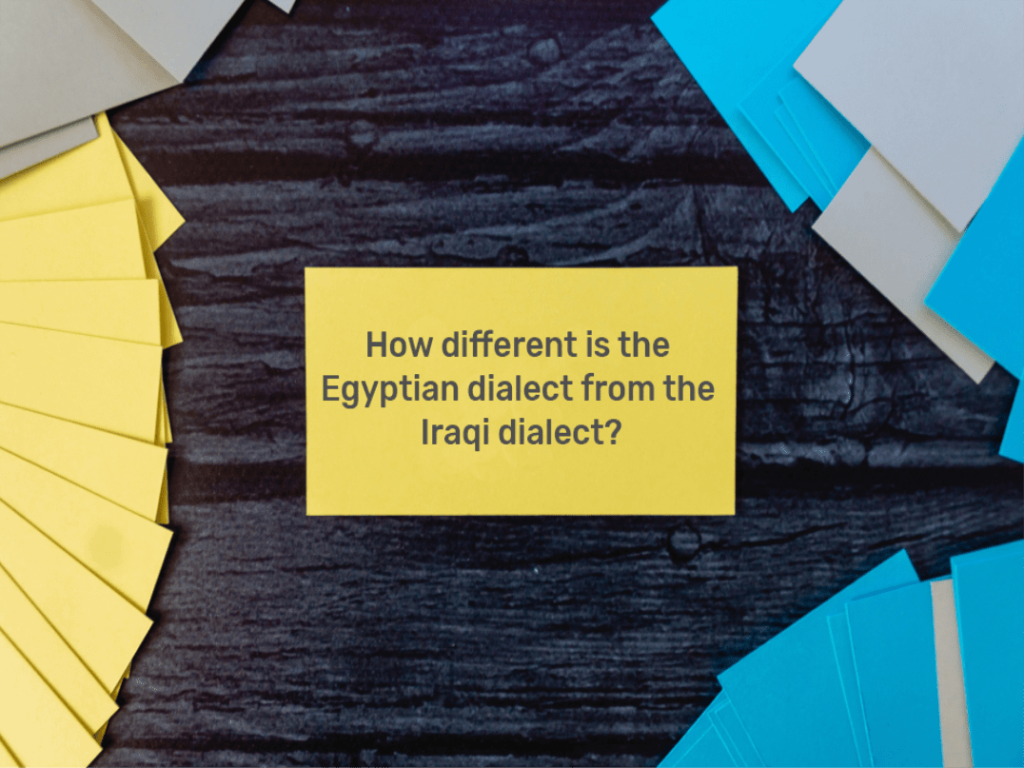When we think of the Arabic language, it’s easy to imagine a single, unified form. However, the reality is a rich tapestry of regional dialects, each with its own unique flavor. For those learning Arabic, the differences between these spoken forms can be quite striking. Traveling linguistically between Egypt and Iraq, for instance, is akin to stepping into two distinct worlds.
While Iraq boasts a diverse linguistic landscape, including Kurdish, Turkmen, and Neo-Aramaic languages, the Arabic you’ll hear on the streets of Baghdad and other major cities is predominantly Iraqi Arabic (often referred to as Amiya Arabic). So, just how different is this Iraqi Arabic dialect from Egyptian Arabic, another widely spoken variety? This is a fascinating question, especially if you’re considering which dialect to learn.
Let’s delve into some concrete examples of these Egyptian Arabic differences and Iraqi Arabic dialect features:
Pronunciation:
One of the first things a learner might notice is the different ways certain letters are pronounced:
- The letter “ج” (jeem): In Egyptian dialect, it’s typically pronounced as a hard “G” (like in “go”). However, in the Iraqi Arabic dialect, it’s often pronounced as a “Y” (like in “yes”).
- The letter “ق” (qaaf): The pronunciation of this letter varies across Arabic dialects. In Egyptian Arabic, it’s commonly a glottal stop (like the sound in the middle of “uh-oh”). In Iraqi Arabic, it’s also often a glottal stop but can have other pronunciations depending on the region within Iraq.
Vocabulary:
While some core Arabic vocabulary remains consistent, many everyday words differ:
| English | Egyptian Arabic | Iraqi Arabic |
|---|---|---|
| What’s up? in Arabic | عامل ايه؟ (* عامل إيه؟ *ʿaamil ʾeeh?) | شكو ماكو؟ (shako mako?) |
| Grandma in Arabic | تيتة (teita) | بيبي (bibi) |
| How? in Arabic | إزاي؟ (izzay?) | شلون؟ (shloon?) |
| Now in Arabic | دلوقتي (dilwaʾtī) | هسه (hassa) |
| Okay in Arabic | تمام (tamaam) | زين (zein) |
These are just a few examples highlighting the differences between Iraqi and Egyptian Arabic.
Grammar (Simplified):
While a deep dive into grammar is beyond the scope here, it’s worth noting that there can be differences in verb conjugations, the use of certain particles, and sentence structure. The article previously mentioned consonant roots and stems, which reflects a slightly different morphological approach in the two dialects.
The language spoken in Iraq has been influenced by its historical interactions with Persian, Turkish, and other regional languages, contributing to its unique character. In contrast, Egyptian dialect has its own historical influences. These separate linguistic evolutions are key to why is Iraqi Arabic so different from other Arabic dialects, including Egyptian Arabic.
If your goal is to learn Iraqi Arabic to converse with Iraqi people, understanding these fundamental differences is crucial. While having a grasp of one Arabic dialect might offer a slight familiarity with the broader Arabic linguistic landscape, you’ll likely find significant challenges in understanding and speaking the other without specific study. Therefore, as you consider the best Arabic language for you, it’s essential to research and choose the dialect that aligns with your communication goals.
Don’t forget to download our Arabic learning app, where you can explore and learn a multitude of Arabic dialects, including both Egyptian and Iraqi Arabic!



